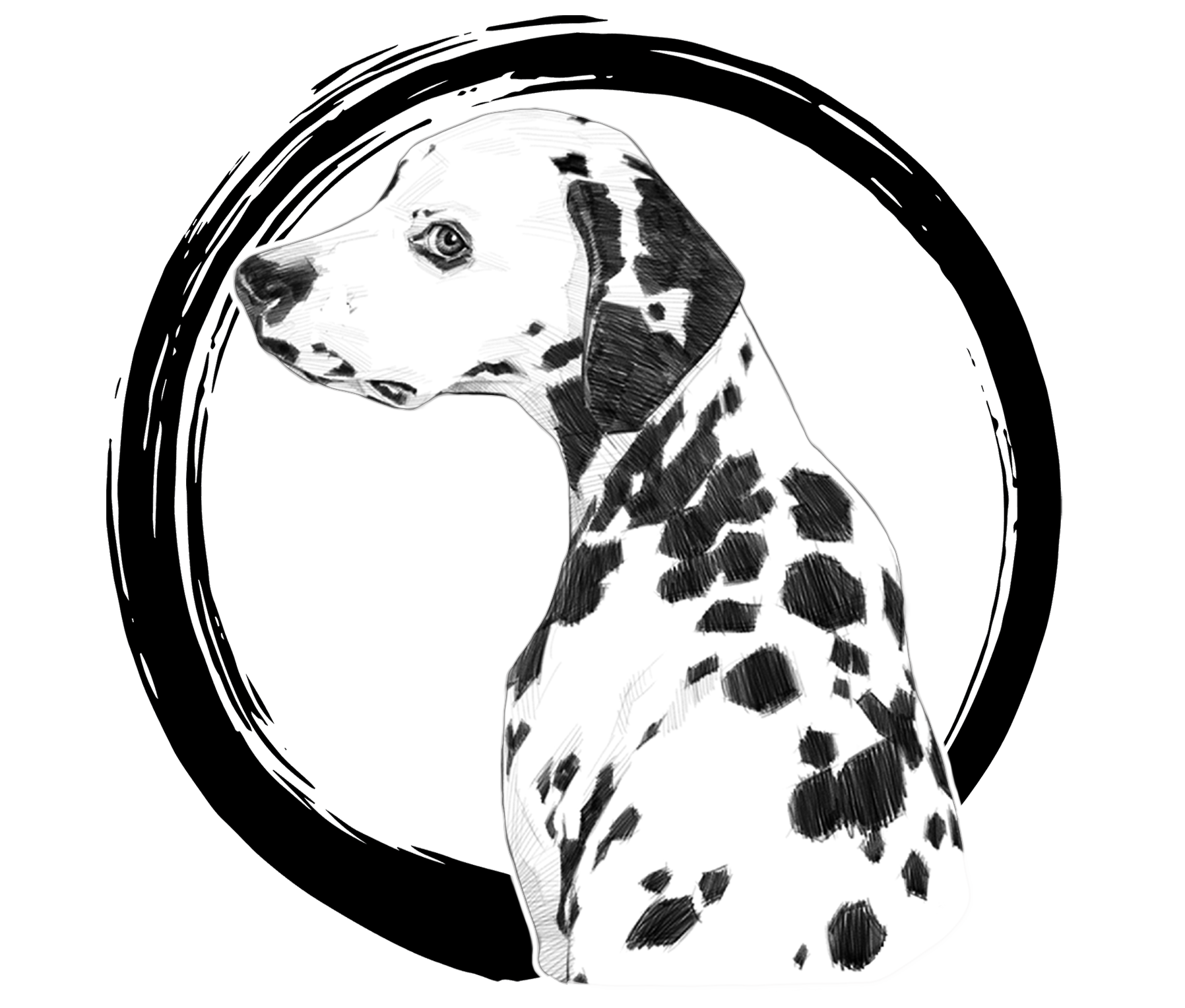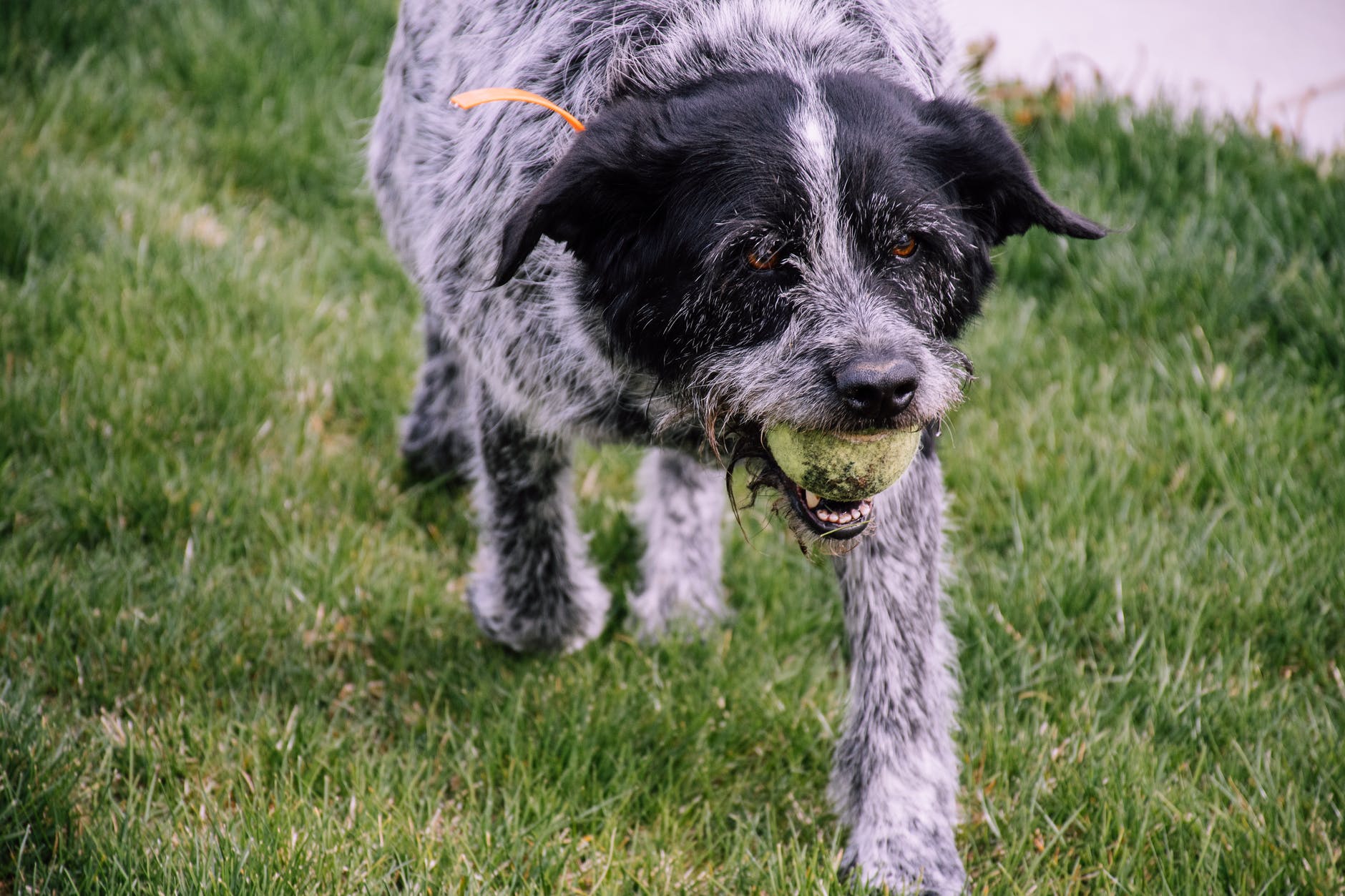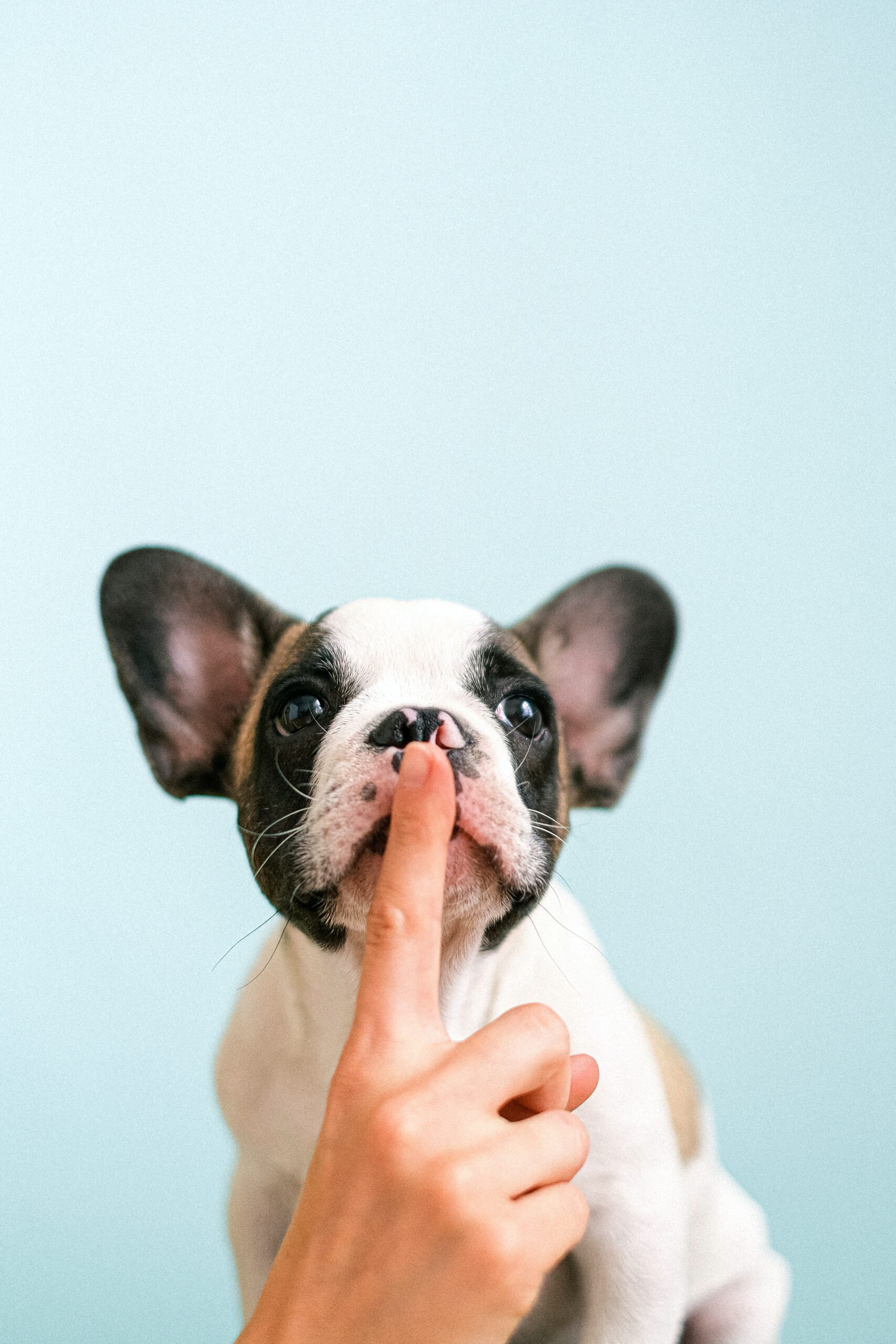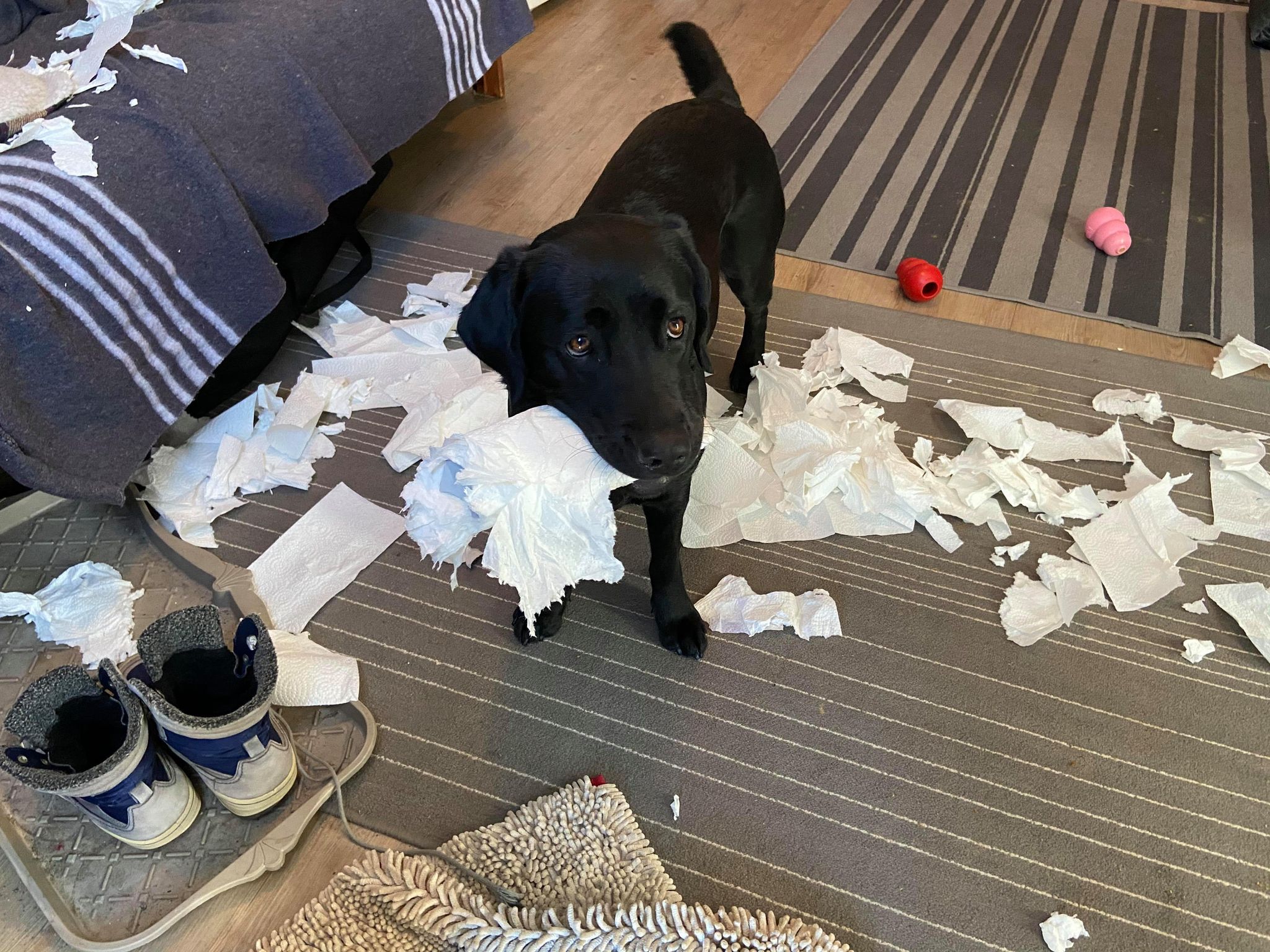Separation Anxiety
DIAGNOSTICS
Separation anxiety is a truly traumatic experience for both the dog, and often the human. While the true definition is based upon a physiological response of “panic”, in practice, the following clues are often diagnostic
- Urination or defecation in a dog that is “housetrained” ONLY when you are gone.
- Destruction, especially by the door or windows. Occurs ONLY when you are separated.
- Howling or crying when separated. These are generally long slow barks or howls and sound “lonely”.
- Signs of anxiety when you prepare to leave. Whining, crying, trying to escape out of the door.
- Pacing, salivation (drooling), dilated pupils, increased dander when you leave or are preparing to leave.
- Inability to eat when you are gone.
- A dog that is normally very clingy.
Why does my dog have separation anxiety?
These dogs are often labelled “obstinate”, spoiled, vindictive, or angry. People often think the dog is “getting back at them for leaving.” In fact, the dog is truly terrified–they are having a panic attack. They are afraid of being left alone. This is common in shelter dogs and rescues who have been left, but also common in our household companions that have not been conditioned to being left alone, dogs with general anxiety disorders, and dogs that have been traumatized when left (e.g. fireworks, scary strangers, etc). In fact, one study shows that over 80% of dogs have the chemical signature (increased cortisol) of separation anxiety, even if they don’t show behavioral symptoms. Dogs are hardwired to want to be with us. In our modern world with jobs and hot cars and other places dogs really can’t go, it’s just not always possible to take our dogs with us safely. Check out the techniques and stories below.
What can I do?
There are often “low level” techniques we can try to alleviate symptoms of separation anxiety and the dogs’ panic. These are things to try first, and if you don’t see significant improvement in the first few days, you will need to up your game considerably. We have linked resources below if these techniques don’t alleviate the symptoms.
- Leave your dog in your usual snuggle place. This is important! Laundry rooms. kitchens, and bathrooms are all uncomfortable cold places that the dog only goes to (involuntarily) when you leave. Even if you make it comfortable, it doesn’t smell like you. And guess what, dogs tell time with their nose! Leaving them in a familiar snuggle place will increase their sense of security, and help them realize you are coming back (think about how much more likely you are to feel anxiety in a new city or hotel room, as opposed to in your own home!).
- Don’t crate*. For most dogs, a crate is counter-productive. Dogs sense of well-being is usually tied to their ability for self-determination–the ability to move around and check things out alleviates feelings of helplessness in humans, and seems to reduce anxiety in dogs as well (this is not always the case, but holds for most dogs). (*if your dog has severe symptoms that require crating for safety, you should probably jump straight to the formal training protocols listed below. A crate may make the feelings worse and harder to eventually train).
- Play audio tapes or soft music. This reduces the salience of outside noises and the potential for being startled, as well as gives the dogs mind something to focus on.
- Take the dog for a long, relaxing, sniffy walk or offleash jaunt before leaving. Yes, this can mean getting up earlier. This helps prepare the dog for a good long nap–isn’t that the best occupation when you aren’t home?
- Feed the dog before you leave–like the long walkies mentioned above, this helps prepare the dog physiologically for a nice long nap.
- Leave a 10-15 minute window for relaxation between any exciting activities and your leaving–this helps prepare the dog physiologically for calmness–a GREAT starting point!
- Keep coming and going low key and relaxing. You don’t want your dog waiting at the door thinking “OMG OMG OMG OMG, she’s going to be home ANY SECOND and it is going to be SO FUN!!!!” This tends to amp up stress hormones and is counterproductive. Instead, greet your dog gently and with love, let them potty, and wait at least 15 minutes before doing any highly arousing activities like ball play.
- Get an adaptil collar or DAP diffuser. Consider other calming aids like the new calming probiotics. Most of these are low level oxytocin or serotonin boosts, just a bit stronger than drinking a glass of milk. Yes they help. No, they are not a magic bullet.
- Medications. For separation anxiety (or isolation distress) you may need to pull out the big guns like a certified behavior consultant or a vet behaviorist, or prescription anti-anxiety medications.
For more information, we recommend the following resources. Please download this whole file and come back to these resources again and again!
Ziva’s Story One of our very own has words of encouragement–Ziva went from being incredibly difficult, to non-destructive and happy. Read her story here for encouragement and support.
https://www.facebook.com/groups/Dogtraining101/permalink/1292991817486261/
Online behavior help. We’ve been recommending Malena de Martini for years. As the first person to really “solve the impossible”, Malena has a blog, a book, and an amazing online training program that can help you and your pup. For her online class, use the code DOGS101 for our very own discount!
https://malenademartini.com/
https://www.dogwise.com/treating-separation-anxiety-in-dogs/
Is it boredom or anxiety? Boredom and anxiety often leave similar evidence. Medical problems such as UTI can also masquerade as separation anxiety. Check out this link for some ways to tell the difference (and better help your dog and your home!)
https://positively.com/dog-behavior/behavior-problems/separation-anxiety/dog-boredom-vs-anxiety/
Books
“I’ll Be Home Soon!” by Patricia McConnell
https://www.dogwise.com/ill-be-home-soon-how-to-prevent-and-treat-separation-anxiety/“
Treating Separation Anxiety in Dogs” by Malena Demartini Https://www.amazon.com/Treating-Separation-Anxiety-Malena-Demartini-Price/dp/1617811432
Great blogs to check out!
7 Day Separation Anxiety Survival Guide
http://www.simplybehaviour.com/course/seven-day-separation-anxiety-survival-guide/Step by step help and infographic
https://positiveanimalwellness.com/separation-anxiety-in-dogs-dont-panic/?fbclid=IwAR29EeoSZFSswfbCMAiw5jRu1TN6cwV5WgSP35_pd1DBTVYIT2Mp3WWE4O8




